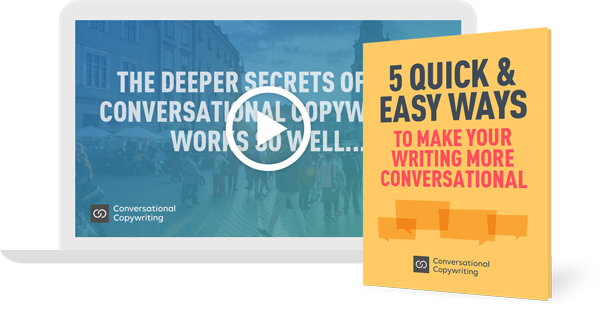
In the words of GPT-4, “AI can mimic empathy to a certain degree, but cannot genuinely empathize with a human in the way humans empathize with each other”.
No AI can feel the emotions we feel. They can read the text of Romeo and Juliet, or the script for Sleepless in Seattle… and then mimic the emotion of love. But they cannot feel love.
They can’t love a person, or even care about that person. Whether a person is happy or sad means nothing to an AI.
Nor can an AI write sales copy that is crafted to truly empathize with a reader on an emotional level.
But as humans we CAN do that… by fusing the power of empathy with the craft of conversational copywriting.
Empathy lies at the heart of all good conversations.
Most of us have a few conversations each day, with loved ones, friends or work colleagues.
Many of these conversations are not particularly deep or important. They’re just exchanges of information. “Hey, don’t forget that Jack has soccer practice at 3:00.” “No problem, I’ll be there.”
But sometimes a conversation is a lot more important. It might be with your spouse, and be important to the health of your relationship. Or it could be with your boss, with the potential to impact your future at the company.
These are the conversations where you have to focus and be in the moment. You have to listen, and show you’re listening.
And to maximise the opportunity for a positive outcome, you need to go further… you need to truly empathize with the other person. You have to be able to see through their eyes, walk in their shoes… and respect their feelings.
That’s the foundation of a really good conversation. And this is the mindset of a proficient conversational copywriter. It all begins with empathy.
Conversational writing begins with empathy for your readers.
Let’s say you’ve been hired to write some sales copy for a small kitchen blender. This model of blender is typically used to make smoothies.
The client brief tells you that most of their buyers are hoping to improve their health, or the health of a loved one. Maybe they’re trying to lose weight, or make up for years of poor eating habits.
Or perhaps they are following a celebrity TikTok channel, where they’re being sold recipes and ingredients for high-energy smoothies.
But… as the copywriter, you may be bringing a little baggage to the table. Perhaps you don’t have patience for people who follow the latest weight loss fads, or fall for celebrity endorsements. Perhaps you look down on them. Laugh at them even.
Well, now you have a problem as a copywriter. Those negative feelings will get in the way. You’ll find it hard to empathize with your audience.
You need to step back, take a breath, and put aside your own feelings. Look at everything through the eyes and lives of your prospects. Empathize with their point of view.
When readers feel heard, and respected, they’re more likely to buy.
As soon as you empathize with your audience, you are ready to enter conversational mode as a writer.
Now you’re writing as if you’re sitting across the kitchen table from your reader, with a smile on your face and respect in your heart.
When your prospects recognize empathy in your writing, they’ll feel heard, and respected. And they’ll be way more likely to buy.
This is the power of conversational copywriting… a combination of copywriting skills and empathy for your readers.
And this is a combination AI tools cannot replicate, because they don’t feel emotions. They can’t smile, feel respect, or empathize.
No wonder expertise in conversational copywriting is now in demand more than ever before.
You can find out more about my professional-grade course on Conversational Copywriting here.
